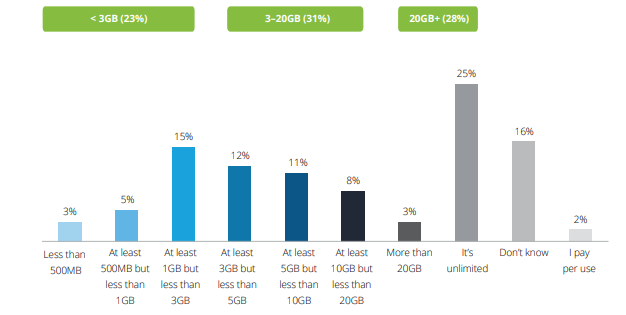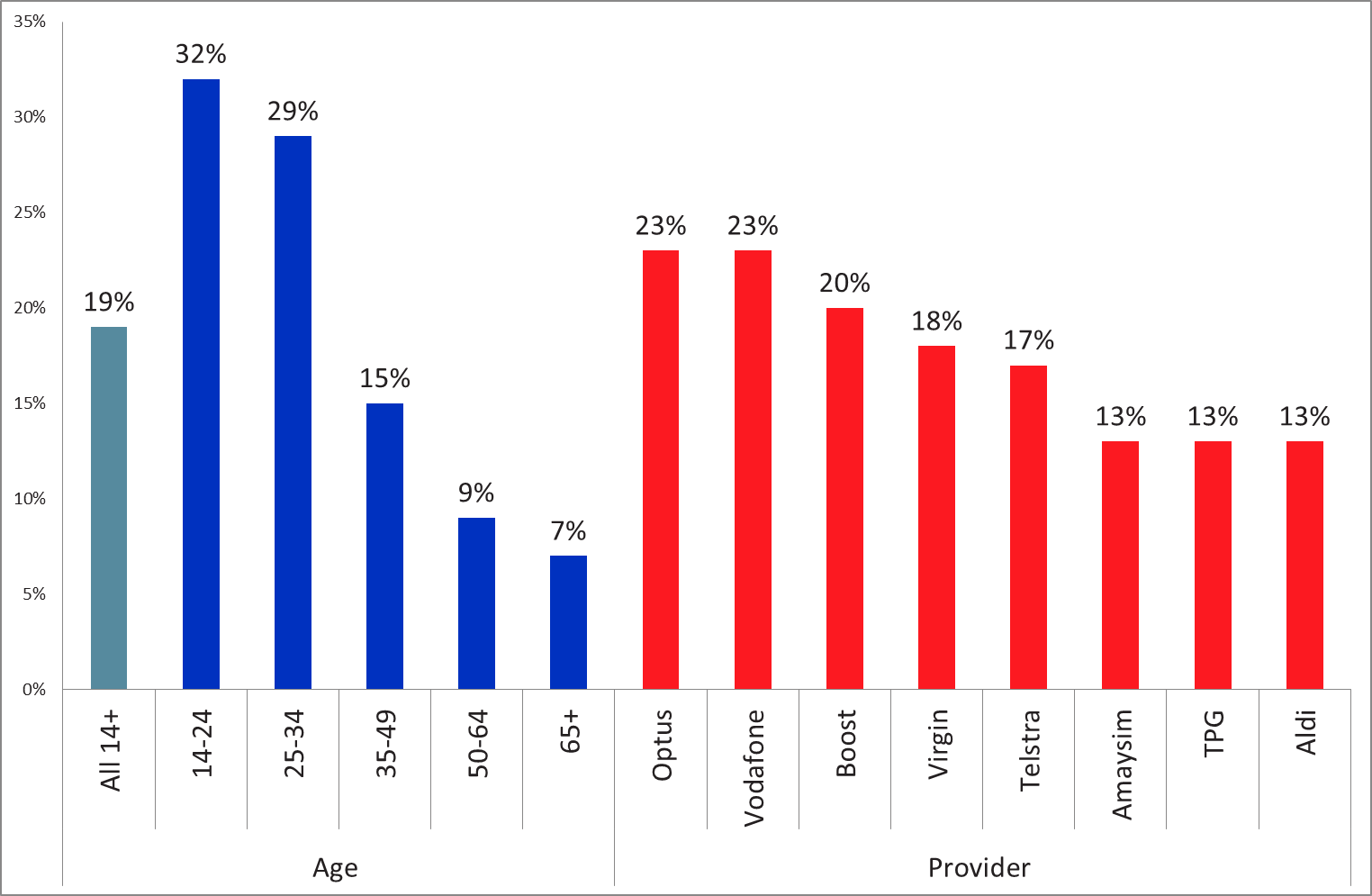Nearly half of Aussies regularly exceed their phone’s data limits. That’s largely thanks to the increase in popularity of video streaming and live TV via mobile. A 2016 Roy Morgan Research revealed that almost one-third of smartphone users aged 14-24 – and almost as many aged 25-34 – often reach their mobile data limit too soon.
This is despite the increase in data allowance that goes with most of today’s plans. With all but the most budget plans offering more than 10GB of data, the average data allowance has doubled since 2016. However, the average consumer’s data usage has increased accordingly.
Charges for extra data result in consumers paying collectively around $30 million a month to their operator. Australians are considerably miscalculating their data needs. They don’t realize that choosing a plan with a higher data limit is typically a lot cheaper than paying excess data charges. With many telcos charging $10 per extra GB extra, regularly surpassing your data limit could cost you hundreds of dollars per year.
On the other hand, paying extra for a plan that has more data than you will ever use is just as wasteful as constantly exceeding your data limit and paying the excess fees. To avoid paying an unnecessary amount for your data usage, it’s a good idea to spend some time realistically calculating your actual data needs.
Figuring out how much data you need
Data needs vary widely from person to person, so there’s no “one size fits all” answer to this question. Data usage depends on the activities you perform online. If you are involved in heavy video streaming, for example, you burn through a lot more data than those who use the internet just for checking emails and chatting.
How much data do apps use?
Here is the average data usage for common internet activities:
- Web browsing: Approximately 85MB per hour
- Facebook: Approximately 80MB per hour for browsing and 160MB per hour for video
- Snapchat: Approximately 160MB per hour
- Instagram: Approximately 720MB per hour
- YouTube: Approximately 300MB per hour
- Foxtel: From 320MB per hour
- Netflix: From 250MB per hour
- Music streaming: Approximately 150MB per hour
- Podcast: Approximately 600MB per hour
- Gaming: From 3MB per hour
Important note: The data allowance and data usage figures given here should be used as a guide only.
Figuring Out Your Mobile Data usage
The most obvious way to check your data needs is to look at how much you’re already using. Smartphones come pre-equipped with in-built tools that allow you to check your ongoing data usage. If your phone doesn’t have these tools or you’d prefer not to use them, you can easily add an app to keep track and manage your data usage. Most telcos provide data tracking tools either via a mobile website or a specific app for your smartphone.
If you’re an iPhone user, go to Settings>Mobile and scroll down to determine your mobile data usage and how much data each app has used in the current usage period. If you use an Android phone, go to Settings>Data Usage to check your data usage. Windows phone users can see their current mobile and Wi-Fi data usage using the app called Data Sense.
Important Tips for Estimating your Phone Data Usage
Look at your last 4-5 phone bills to track your data usage habits. If you paid an excess usage fee during a normal month, it’s a good idea to consider a bigger data plan. Remember to consider the needs of everyone who shares the mobile plan with you, including your kids, parents, etc.
If you’re signing a 24-month contract, consider your future needs as well. Even if you might not be using more than 5GB currently, your future needs may change, given Aussies’ constantly evolving internet usage habits.
According to Deloitte Global Mobile Consumer Survey in July 2017, 23% of all smartphone users aged 18-75 years receive a data allowance of less than 3GB data monthly, while 31% of them receive between 3-20GB and 28% of them get more than 20GB of mobile data. With data needs rising, the number of people moving into the upper bracket should increase.

Monthly data allowance on your phone
Alternatively, you can choose providers that offer value-for-money mobile plans with no lock-in contracts. A couple of telcos, including Telstra and Virgin Mobile, now offer plans with data rollover, which allows users to add unused data into their allowance for the coming month. Prepaid plans are a foolproof way to avoid paying excess charges. It keeps you in control of your plan’s data limit and not at the sympathy of your telco’s auto top-up.
If you find yourself waiting for the next month’s data allowance to come around before you can use your data freely again, or if you often pay $65 for your $45 plan, it might be time to reevaluate your data needs. There’s no need to spend time worrying about data limits – choose the right plan, and your data limit will work around you.





Leave a Reply